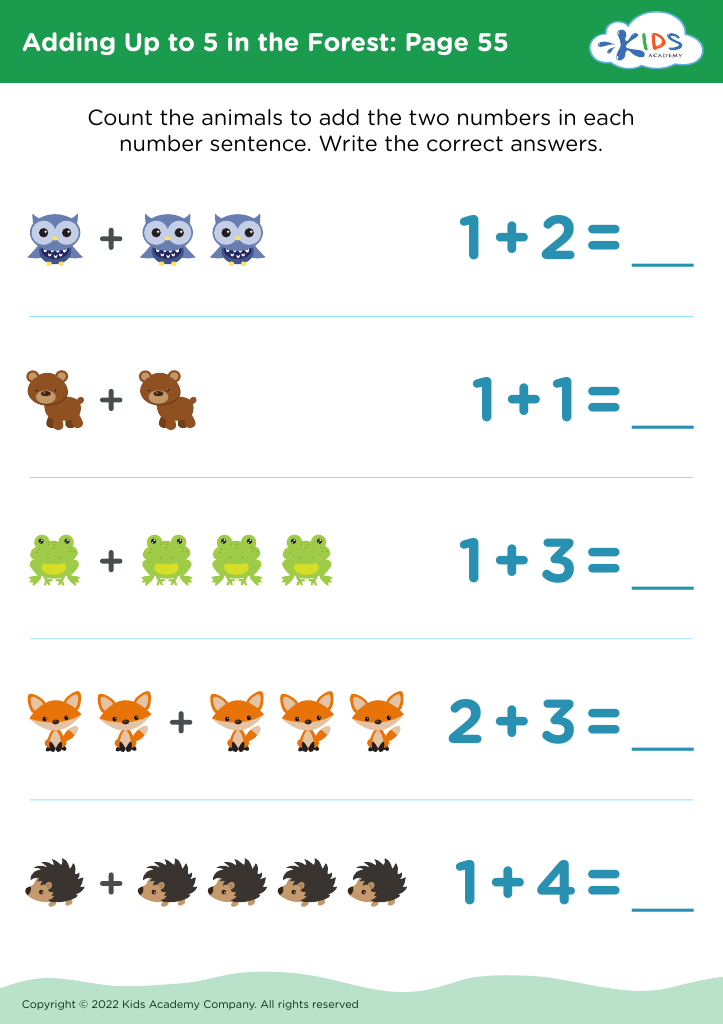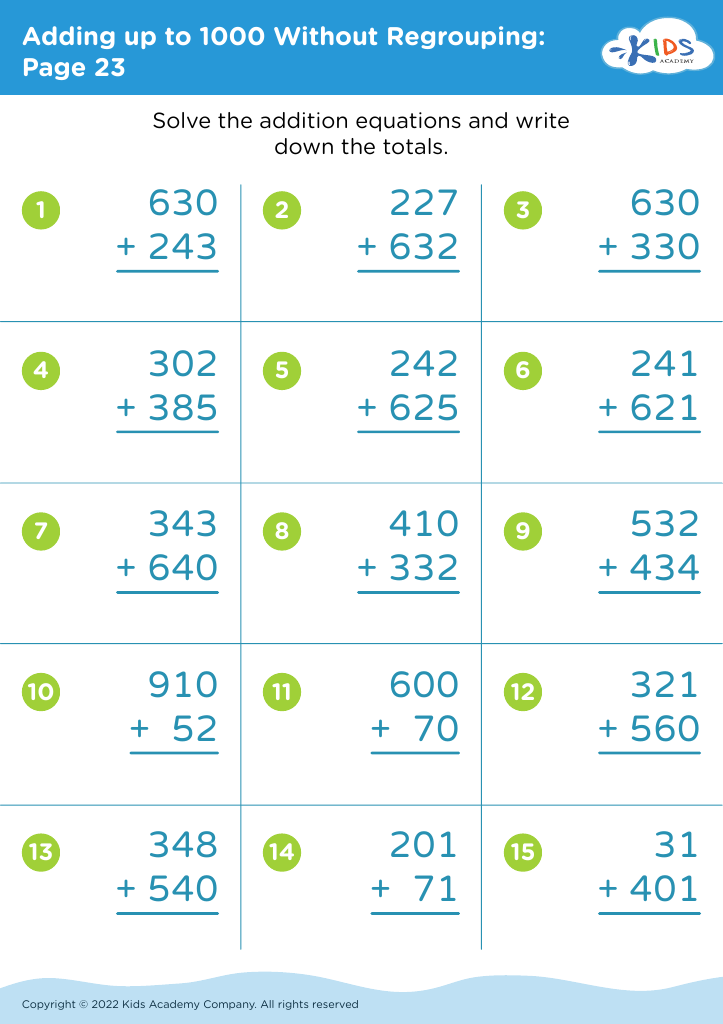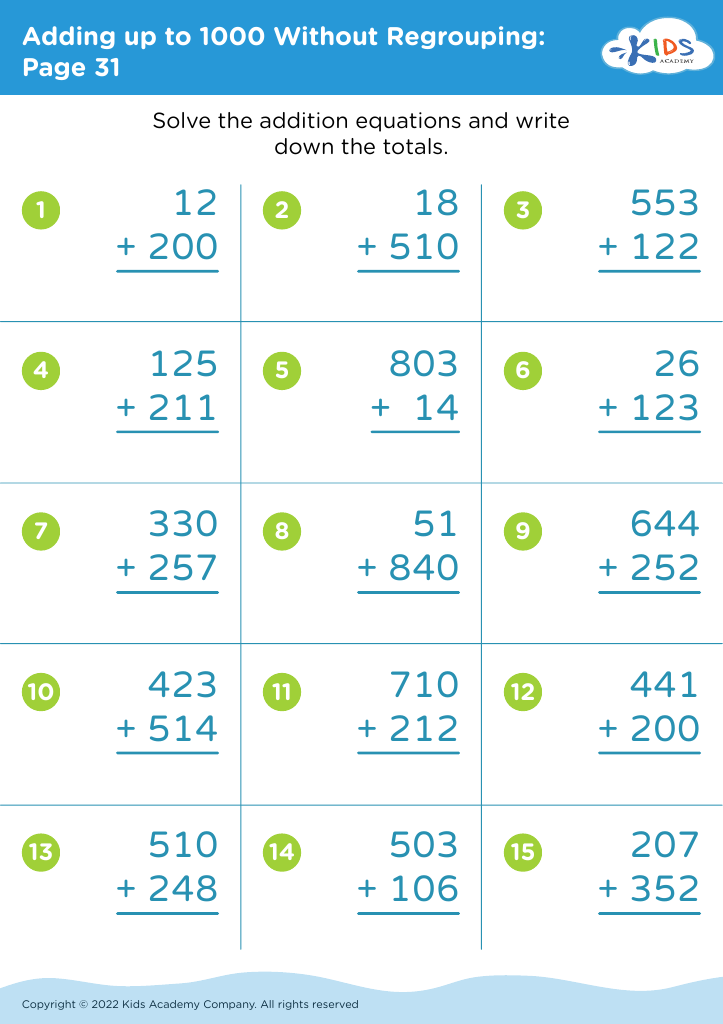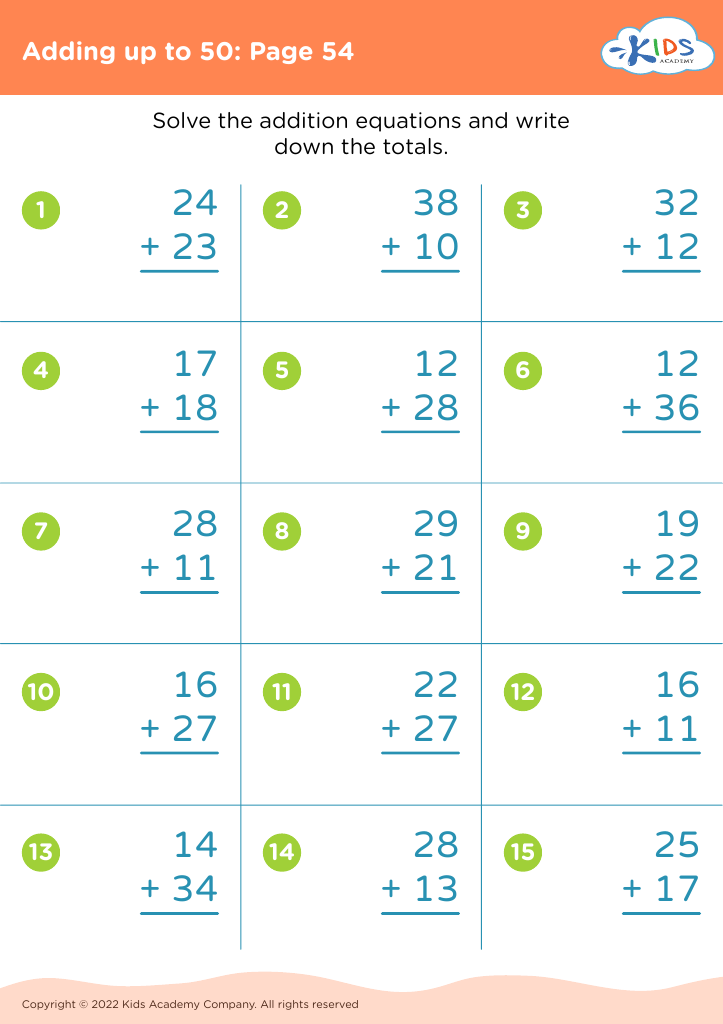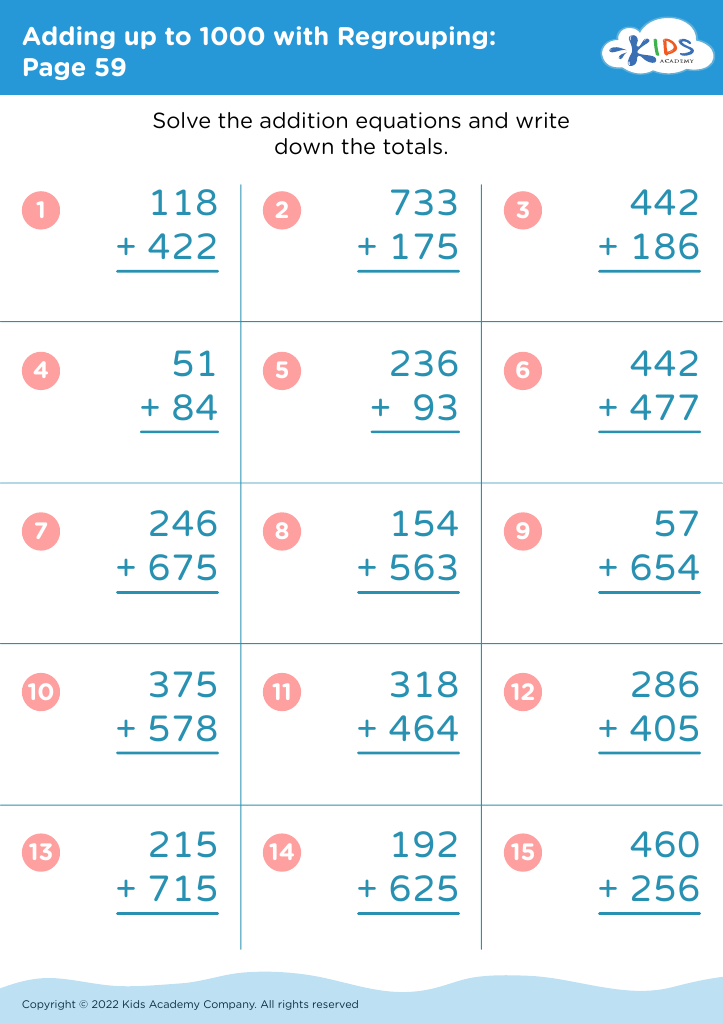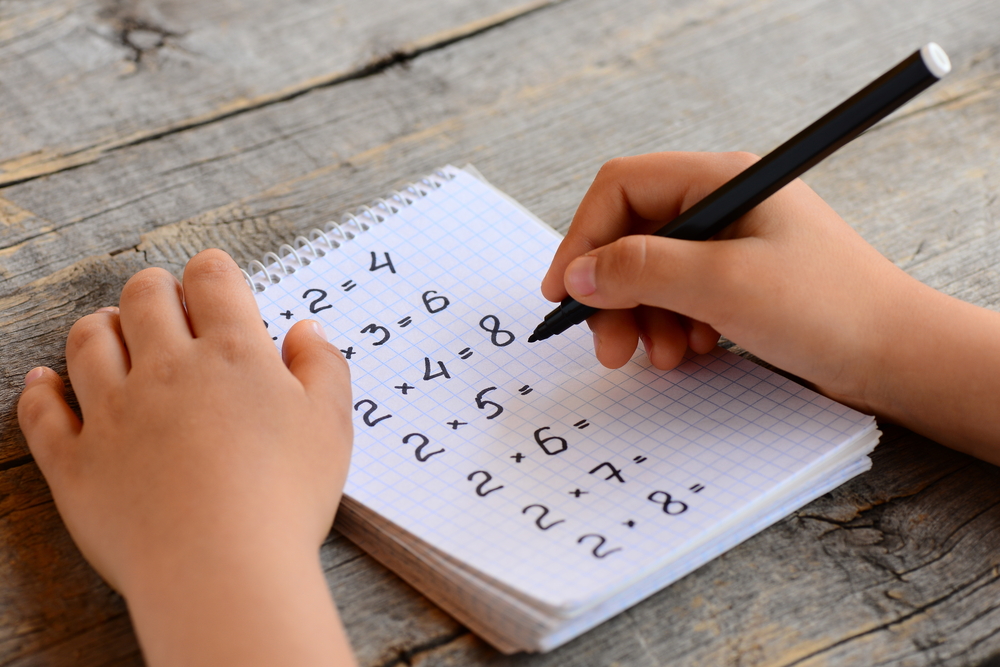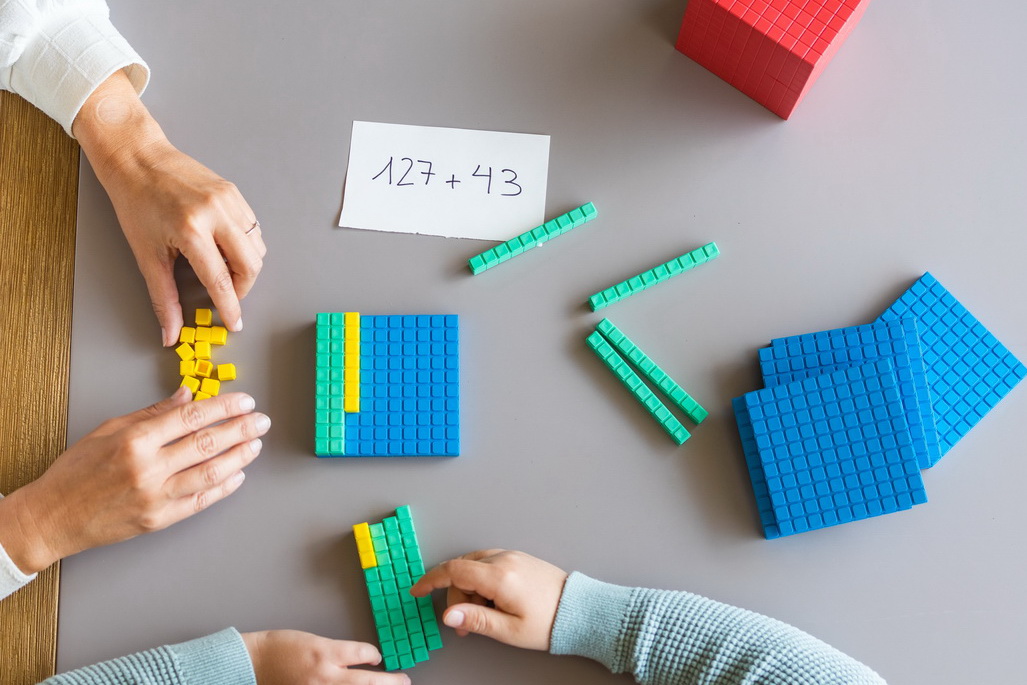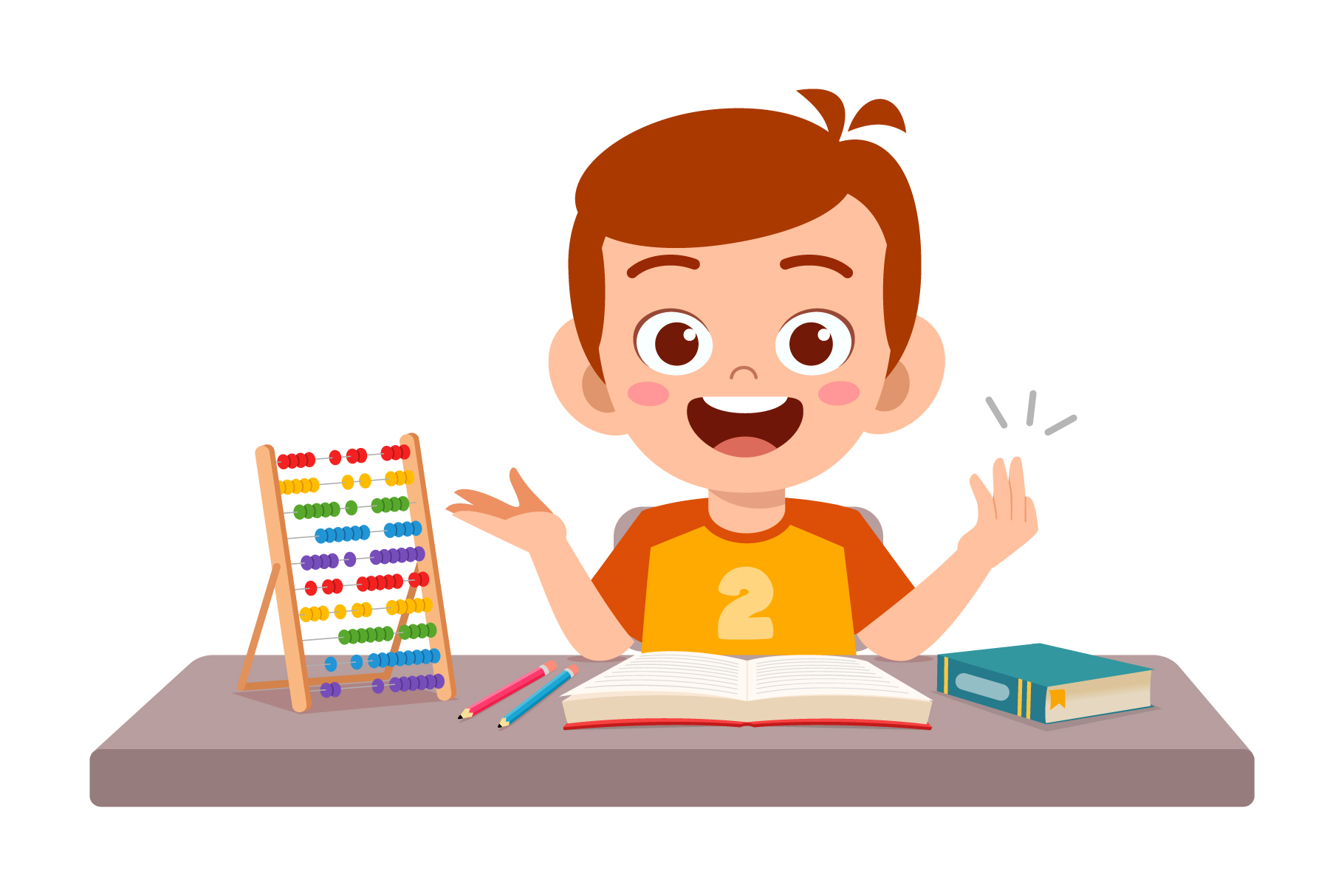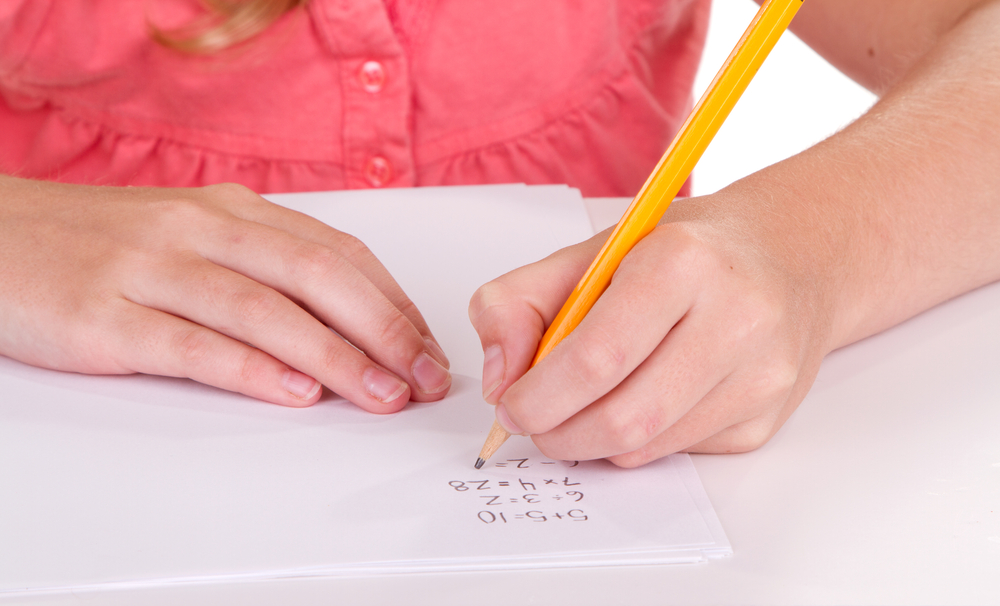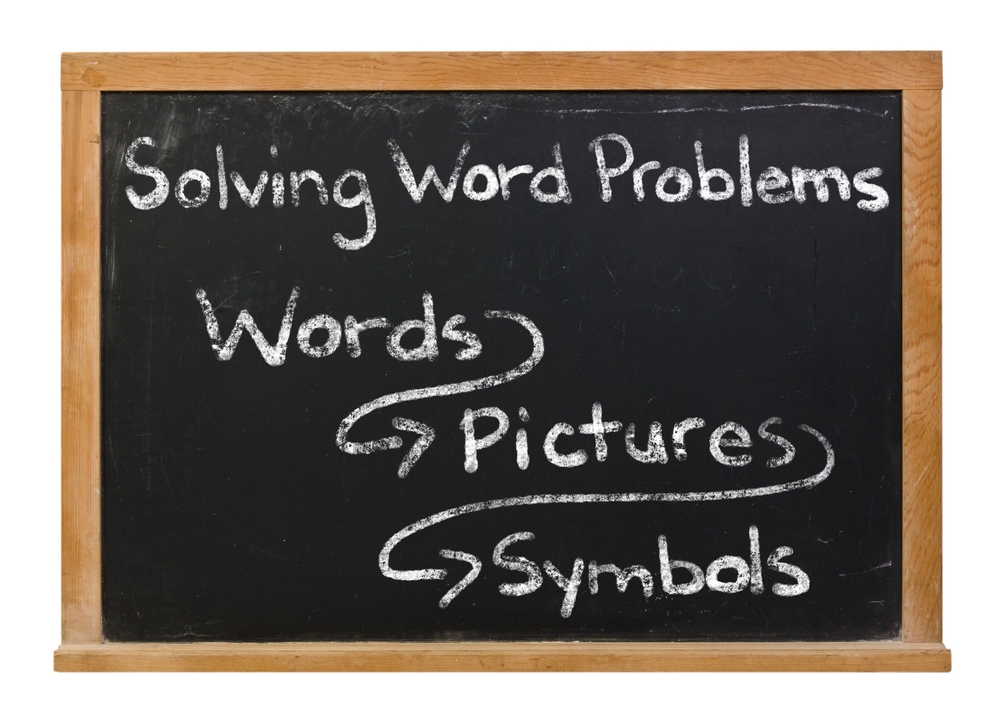Visual interpretation Addition & Subtraction Worksheets for Ages 3-7
5 filtered results
-
From - To
Introducing our Visual Interpretation Addition & Subtraction Worksheets for Ages 3-7! These engaging and colorful worksheets are designed to help young learners develop essential math skills through visual aids and interactive exercises. Each worksheet combines fun illustrations with step-by-step instructions to make learning addition and subtraction enjoyable and effective. Perfect for early learners, these activities foster critical thinking and problem-solving abilities while solidifying basic math concepts. Unlock your child's potential and make math a captivating adventure with our expertly crafted worksheets. Explore more at Kids Academy and give your child the head start they deserve!
Visual interpretation of addition and subtraction for children ages 3-7 is crucial because young learners often grasp concepts better through images and hands-on experiences rather than abstract numbers. At this developmental stage, kids are concrete thinkers who comprehend the world through direct sensory experiences.
Using visual aids, such as counting objects, pictures, and interactive activities, makes math tangible. For instance, showing a child that adding 3 apples to 2 apples results in a total of 5 apples helps solidify the concept far better than the abstract equations "3 + 2 = 5". This fosters a deeper understanding and builds a strong mathematical foundation. Similarly, using drawings or physical objects to demonstrate subtraction helps kids visualize what it means to 'take away'.
These visual methods also enhance engagement and motivation. Playful and relatable visuals turn learning into an enjoyable activity rather than a chore, encouraging children to explore math with curiosity and enthusiasm. Additionally, early exposure to these skills supports cognitive development, logical reasoning, and problem-solving abilities, which are critical for future academic success.
Parents and teachers caring about visual interpretation of addition and subtraction ensure that children not only learn math, but also understand it at a fundamental level, setting them up for greater confidence and proficiency in all areas of mathematics.
